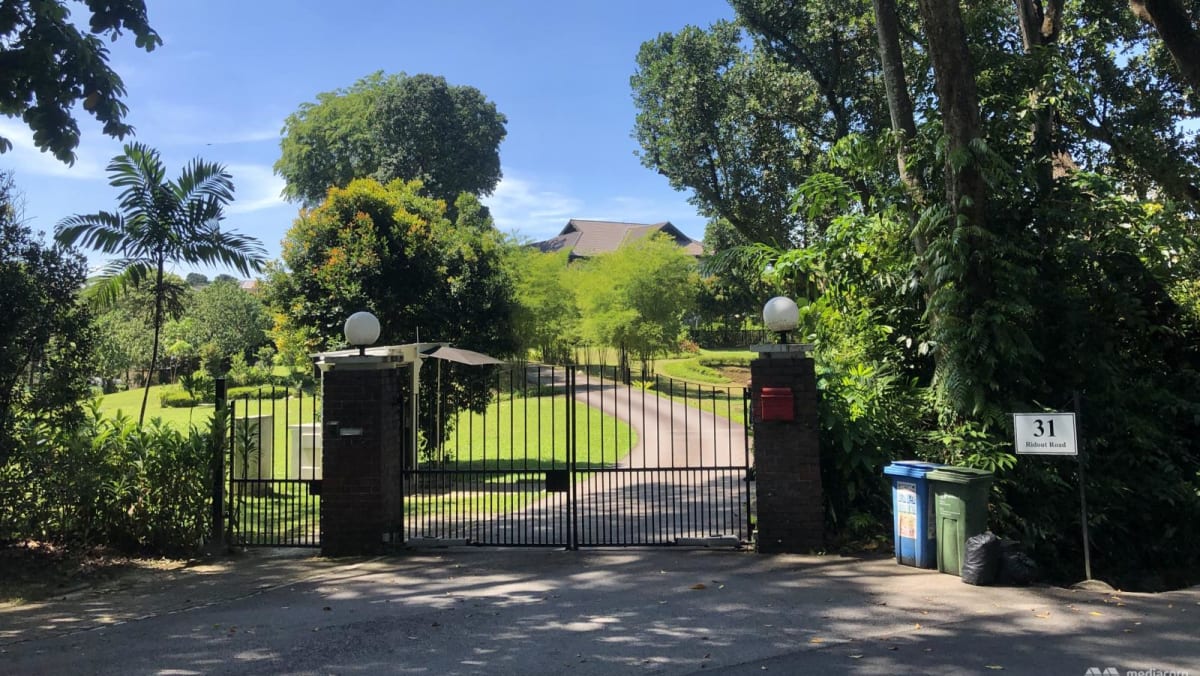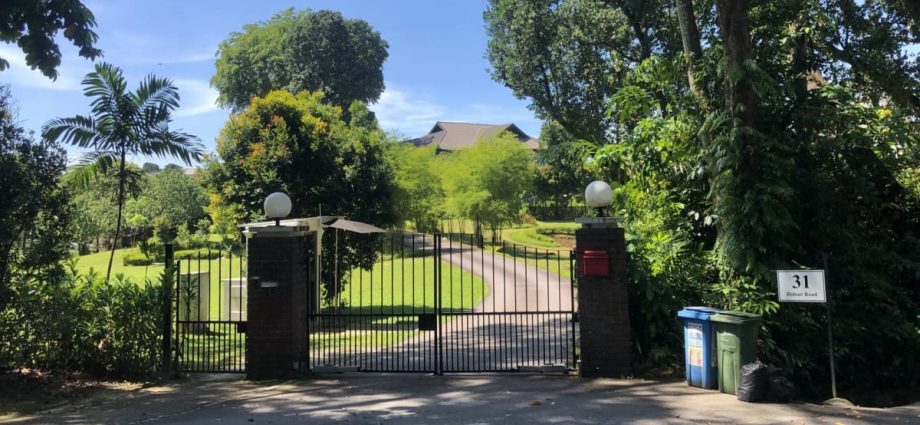
Here are key excerpts from Mr Teo’s report:
Did the ministers have conflicts of interest?
“In the case of No 26 Ridout Road, as Minister Shanmugam is the Minister for Law and MinLaw oversees SLA, a conflict of interest could have arisen if Minister Shanmugam had remained in the chain of command exercising authority over the renting out of this property. And had Minister Shanmugam made decisions that affected his rental of No 26 Ridout Road, that would have been an actual conflict of interest.
However, Minister Shanmugam had removed himself from the chain of command and decision-making process. Minister Shanmugam had informed the then DSMinLaw that he would recuse himself on any discussion related to the rental of the property, Minister Shanmugam also instructed him to approach the then Senior Minister of State (SMS) in MinLaw, Ms Indranee Rajah in the event any matter had to be referred to the Minister. Minister Shanmugam had also informed Senior Minister Teo Chee Hean if the matter had to go beyond SMS Indranee, she would approach SM Teo. There was no matter raised by SLA to MinLaw during the entire rental process.
Minister Shanmugam had thus recognised the potential conflict of interest, duly declared it to Senior Minister Teo, and taken effective steps to eliminate this potential conflict and to prevent any actual conflict from arising.
In the case of No 31 Ridout Road, no issue of conflict of interest arose because Minister Balakrishnan’s official responsibilities did not include SLA.
Thus, in the rental of these two properties, both the Ministers and the public officers involved duly declared any potential conflict of interest and followed the proper processes to prevent any conflict of interest from arising.”
Did the ministers benefit from any privileged information?
“CPIB found no preferential treatment given to the Ministers and their spouses and no disclosure of privileged information in the process of the rental transactions. There was no evidence to suggest any abuse of position by the Ministers for personal gain.”
Did the ministers benefit unfairly from favourable rental rates?
“The review established that the rental rates paid by both Ministers were at the market value and not below market valuation. There was no evidence that the Ministers were given favourable rental rates due to their positions. The rental paid by the tenants for the properties were not below the respective guide rents. For No 26 Ridout Road, despite the guide rent being imprecisely stated by SLA, Minister Shanmugam paid a rental that was equal to what the guide rent should have been and met the minimum rental to be achieved.
The review further compared the rentals paid for No 26 Ridout Road and No 31 Ridout Road with other properties in the area at the material time of 2018/2019 and confirmed that the rentals paid were in line with these other properties.”
Did the minister get unusually long tenancies?
“The review established that the tenancy terms and renewal of both properties were in accordance with the general policies guiding tenancy, and renewal of tenancies for residential properties managed by SLA.
Tenancies are granted on 2-year or 3-year terms, and up to a maximum of 3+3+3 years at any one time in the first instance when entering into a tenancy agreement. SLA would generally allow tenants to renew their tenancies upon expiry, unless (a) the government has other plans for the site, or (b) the tenant has a poor track record (For e.g. the tenant was in rental arrears or breached tenancy rules). In deciding whether to grant a longer tenancy, SLA will take into account various factors, including the likely capital expenditure that the tenant will incur to live in the property. Under the terms of the tenancy agreement, all approved improvements undertaken by the tenant that remain usable, will subsequently become the property of the landlord and revert to state ownership upon return of the property. As such, tenants that incur and revert to state ownership upon return of the property. As such, tenants that incur substantial capital expenditure for improvement works will be granted longer tenure to allow for the amortisation of the expenses over a longer period.
Both the tenancy periods of No 26 and No 31 Ridout Road were within the maximum allowable tenancy of 3+3+3 years for residential properties rented out by SLA or SLA’s managing agents (MAs) at any one time.
In the case of No 26 Ridout Road, SLA granted a tenancy of 3+3+3 years because Mrs Shanmugam had committed to undertake improvement works at a cost in excess of S$400,000. In the case of No 31 Ridout Road, SLA had granted a tenancy of 3+2+2 upfront as Mrs Balakrishnan had committed to undertake improvement works totalling over S$200,000. At the first renewal, Mrs Balakrishnan requested for and SLA agreed to an extension of 3+2 years. This was also within the cap of 3+3+3 years tenancy that SLA can grant, at any one time.”
Were the works SLA undertook at both properties beyond the usual practice for other state properties?
“Having examined the policies and practices in SLA’s management of residential properties, the review concludes that the works done for the properties at No 26 and No 31 Ridout Road were in keeping with SLA’s general practices.
In the case of the property at No 26 Ridout Road, SLA acceded to the request to clear the adjacent land plot because of the significant disamenities arising from the vegetation, which could affect the safety of the tenants at No 26 Ridout Road. Mr Shanmugam also offered to maintain the land at his own cost. SLA would otherwise have had to incur the maintenance costs to keep the plot free of disamenities. The other works done by SLA were not unusual, compared to the works done for other state properties prior to the tenant moving in.
For the property at No 31 Ridout Road, the preparatory works that SLA agreed to undertake were not excessive. They comprised works relating to roof repair, plumbing and electrical checks, amongst other essential repairs, to ensure the property would be in a functional state for the tenant to move in. Mrs Balakrishnan also committed to undertake significant works to improve the state property.”
Did the improvement works have the requisite approvals from authorities?
“URA (Urban Redevelopment Authority) grants conservation permission for works carried out to gazetted conserved buildings. Conservation permission is required for works to a conserved bungalow or new building structures. Permission is not required for minor works that are external to and do not affect conserved bungalows.
Both No 26 and No 31 Ridout Road were gazetted in 1991 for conservation and are subject to conservation guidelines. URA had earlier advised SLA that no approval was required for the installation of a swimming pool at No 26 Ridout Road. This is because planning application to URA is not required for “minor works” that are external to and do not affect the conserved bungalow.
No 26 and No 31 Ridout Road are part of the Tree Conservation Area, which means that NParks’ approval is required for felling trees with girth greater than 1m. SLA had obtained the relevant approvals from NParks for the felling of trees and has kept a record of NPark’s approvals.”

